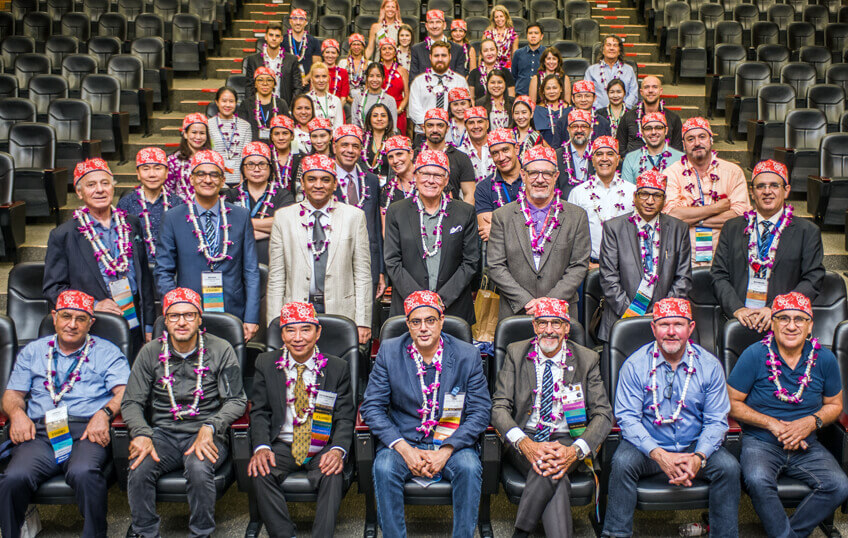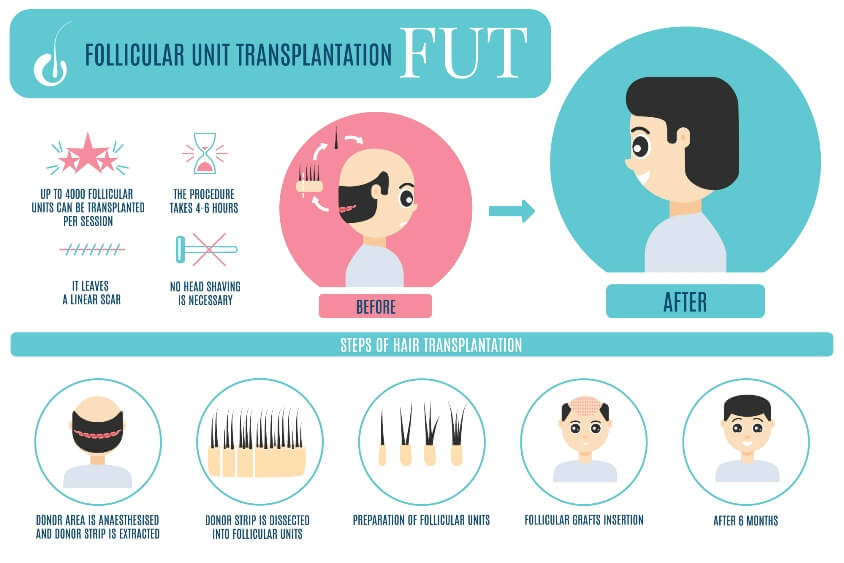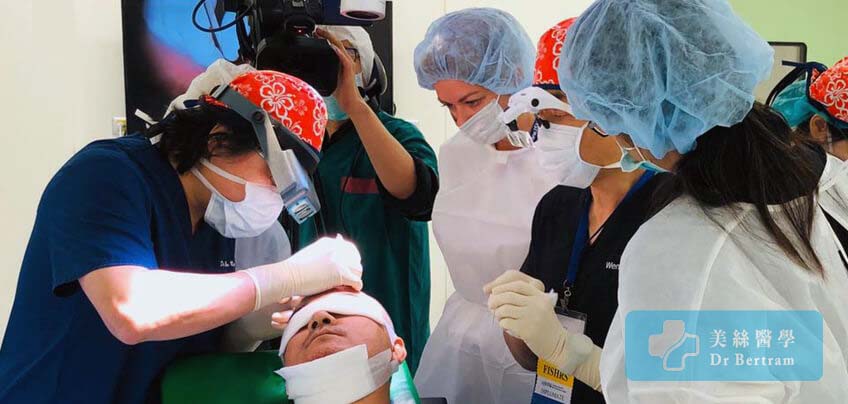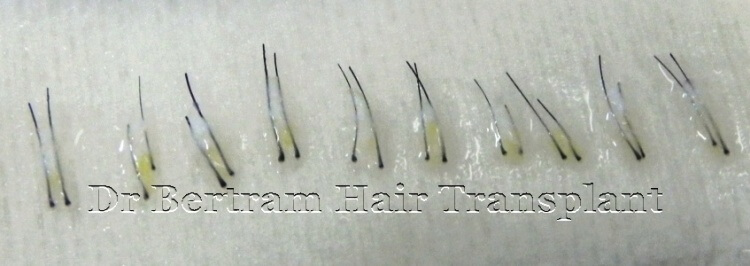World Recognized FUT Expert

FUT since 2008
We provided FUTand FUE hair transplant in Hong Kong since 2009. We insist of only doing one case per day to give our patient the full attention. Over the last 10 years we have performed over 2,500 cases, and is regarded as one of top FUT Hair Transplant Center in the world.
ISHRS Certification
We received the Certification from the ISHRS after completing our one year Fellowship Training Program in FUT.
Certificate of Excellence
We received the Certificate of Excellence from Dr Damkerng Pathomvanich after working with him for 1 year performing exclusively FUT. That was the only certificate that he had issued for the last 30 years.
Publication
Since 2008 we have published about 10 articles in the Medical Journal of the International Hair Restoration Surgery (ISHRS) and 3 Chapters in Textbooks.
Presentation
Since 2008 we have been invited to share our FUT technique in many international conferences".
Live Surgery Demonstration
• In 2010 we were invited to perform FUT Live Surgery Demonstration in Huangzhou, China
• In 2019 we performed Live Surgery Demonstration in ISHRS Meeting in Bangkok, Thailand
What is FUT ?

FUT stands for Follicular Unit Transplant. The technique was first described in 1984, when individual hair follicles resistant to the thinning effect of DHT (Dihydrotesterone) are transferred from one area (Donor Site) to another (Recipient Site). The Recipient Areas can be any part of the body, usually the balding scalp, eyebrow, beard, chest, or even pubic areas.
Strip
FUT is also known as "Strip" as it involves the surgical removal of a narrow strip of hair-bearing skin tissue from the back and sides of the scalp. This piece of tissue is then dissected under microscopes into smaller grafts. The grafts are then meticulously planted into skin pockets (the slits).
FUSE
Some centers called it Follicular Unit Strip Excision (FUSE) but this name is not popular.
Who Should Consider FUT ?

The Professionals
We have been providing hair transplannt for doctors, lawyers, CEO, professors, or even judge of the High Court. FUT is the best option to cater for their special requirements:
• Do not want people to know about having hair transplant
• Do not want to shave for the procedure
• Prefer to keep medium length hair to match their image
• Do not want to have obvious thinning in the Donor Area afterwards
• Minimal downtime, back to work as soon as possible
Severe hair loss
FUT can easily harvested over 2,000 grafts in one session, achieving a better result in a shorter time. More grafts can be taken in a second procedure to cover the large balding area.
Women
FUT is the best option for women. There is no need to shave a large area in the donor area. Remember hair grows at only 1cm per month. It may take years for hair to grow back long enough for styling.
Tight in Budget
As a rule FUT is cheaper than FUE when transplanting the same number of grafts.
No Intention for Skin Head or Military Look
For those who prefer wearing medium length or long hair after surgery, the linear donor scar is not even a concern. Also FUT has the advantage of not causing obvious thinning at the back of the head.
Our FUT No Shave Technique

Modified USA Technique for Asian
In 2008 we had one year apprenticeship with Dr Damkerng Pathomvanich, learning his personal FUT technique known as "Open Technique". While working as a Plastic Surgeon in America, he learned FUT from Dr Stough (Little Rock, USA). After returning to Thailand he modified the technique to cater for the Asians hair. He was the authors of 2 textbooks that focus on Hair Transplant in Asians. He received two Gold Follicle Awards from both ISHRS and AAHRS for his achievement. In 2009 he viited Hong Kong to supervise the setup of our center.
Preparation - Donor Hair Shaving
• Keep at least 1.5 inch of hair to cover the stitches
• Scalp exercise may be needed to loosen up the scalp and reduce tension after strip excision
Number of Grafts Expected
Number of grafts extracted within a day ranges from 1,200 to 2,500 depending on donor density and ease of extraction.
Positioning
Patient lies prone with head turns from time to time. This position has to be kept for 1 - 1.5 hours.
Local Anesthesia
We are using the Level One Conscious Sedation that combines local anaesthesia and oral sedative.
Technique
We are using Dr Pathomvanich (Thailand) Open Harvesting Technique and Double-Layers Retention Suturing; and Dr Frechet(France) Inferior Trichophytic Closure.
Graft Preparation
The strip was first sliced into single layers (Silvering) of follicles before dividing into follicular units under the microscopes. Care is taken not to squeeze the mid-portion where the stem cells locate.
Surgical Time
We allow 1-2 hours on extraction, and another 3 hours to inserted into the recipient site. So the whole procedure may last 5-7 hours.
Wound care
The wound is dressed only for one day. Bleeding after 24 hours is most unusual. Discomfort is expected on the donor area for the first few days. Infection is uncommon and antibiotic is not usually required. The stitches should be removed after 7-10 days.
Special Features of Our FUT Technique

After 10 years of refinement our FUT-Strip technique has the following features:
1. Mixed Follicular Unit Transplant
30 years ago surgeons transplanted large graft 4mm in diameter known as Minigrafts. This provided a dense but unnatural and pluggy look. In 1994 Dr. Bobby Limmer (USA) first described the use of microscope in isolating follicular units (FUs) from the Strip. The grafts were kept as small as possible and Single Follicular Unit (SFU) 1mm in diameter are used exclusively. It had the advantage of achieving a more natural result, but unfortunately failed to reach good density coverage.
Mixed Follicular Unit Transplant combines both single follicular units (SFU) and double follicular units (DFU). SFU-grafts are used exclusively to create the hairline while DFU-grafts are placed in key areas for density.
2. Better Graft Survival
On average 8-15% of grafts would not survive after transplant to grow new hair. Our FUT minimises cellular damage by making use of the latest development in Biotechnology including low level laser and specially formulated storage solution.
In two research studies conducted by Dr Beehner (USA), the DFU we used have a better chance of survival after transplant than SFU. A larger graft with more fatty tissue has extra protection and buffering against the elements of drying and trauma. He further commented that graft survival depends a lot on the skill of the surgical team. Our staff prepare all grafts under microscope to minimize hair root transection
3. Permanent Hair Transplant
We transplant only the good quality hair follicles from the Safe Donor Area for a long lasting result. Those with poor donor supply would not be accepted for Hair transplant.
4. Safe Donor Hair Reserve
Donor depletion has becomes a problem in the current trend of Megasession. We do our best not to waste any grafts during the procedure as to preserve more hair for future use.
5. Natural Looking Result
Grafts are implanted carefully to match the angle, direction, and orientation of existing hairs. We have developed different hairline design techniques and devices for men and women of various ethnic groups.
6. No Shaving - Early Return to Work and Activities
Shaving is recommended but optional. Most people can resume work 2-3 days after the procedure. Light exercise such as jogging and cycling cna be resumed after a week. No need for a long vacation.
For the same number of hair, DFU requires less incisons than SFU. Less puncture holes on the scalp minimize the damage to the local blood supply. Discomfort during and after the procedure is reduced accordingly. In-office Laser and formulated spray are provided to promote wound healing.
7. Smart Use of Available Grafts
Since the donor supply is limited, we ensure every extracted graft is made good use of, using the minimal number of grafts to achieve a reasonable result and at a lesser cost. Also we adopt an Key Area Transplant Approach, with uneven distribution of grafts. Large grafts are dense packed into parting areas to achieve a denser look.

